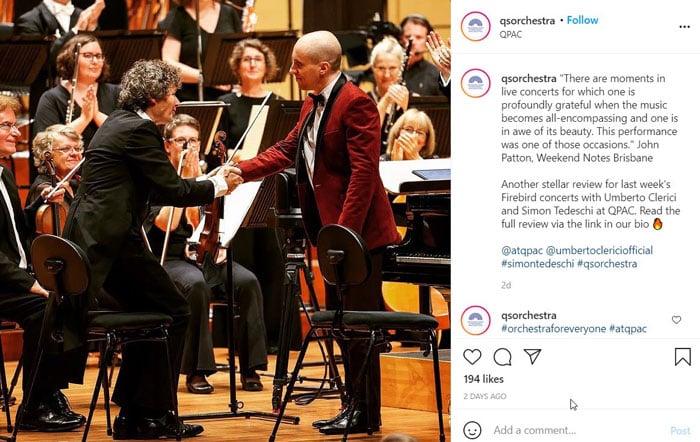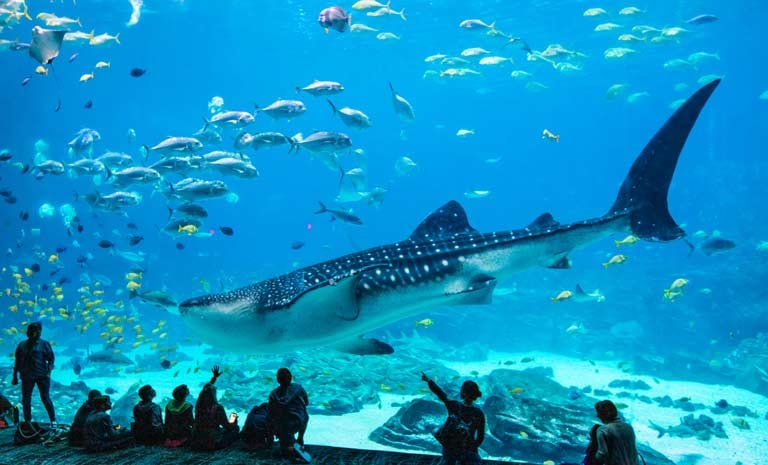Arts and Culture
Business Strategy
Virtual Experiences
Article
Insights & Innovation
6b95bde7-85ba-4851-8a95-43a3e71537a2
5 min
https://edge.sitecorecloud.io/tessituraneab9a-tessiturane5642-staging-5396/media/Images/Discover-Images/TL-Featured-Media-Images/sydney-paul-carmona-768x465.jpg?h=465&iar=0&w=768
Ten things cultural organizations in Australia & New Zealand have learned from reopening
From lockdown to full capacity

President & CEO, Tessitura
From lockdown to full capacity
3/31/2021
5 min
While North American and European arts organizations are either closed or operating at limited capacity, those in New Zealand and Australia have been open for months.
We recently convened a panel discussion with arts leaders in New Zealand with a simple question: What’s reopening been like? Hosted by my colleague Amalia Hordern, Tessitura's Director of the Asia Pacific region, it was an amazing and mind-bending hour.
From my home office in North America, it felt like a glimpse of the future. Everyone was Zooming in from their office (as in, their OFFICE office, not their bedroom office). Lockdowns and re-openings were discussed like standard operating procedure rather than a catastrophic event. The whole call was bubbling with the love everyone is feeling from their audiences right now.
Between the panelists and the very active Zoom comments from others arts professionals in the region, ten themes emerged.
Ten things Australian and New Zealand organizations have learned since reopening
1. The pent-up demand is real
The suspicion that there will be a post-lockdown surge of spending on arts appears to be confirmed down under. Ticket sales are surging at symphony, opera, dance and theater. Most organizations are reporting both subscription and single ticket sales far exceeding pre-lockdown sales, with plenty of fundraising goals being exceeded as well.
2. Staying in touch during lockdown has paid off
One could chalk up the surge in sales to cabin fever after a year on your couch, and that is certainly true. But all of the panelists have seen payoff from their efforts to stay connected during lockdown. Susie Lees-Jeffries, Director of Marketing and Development for the Royal New Zealand Ballet (RNZB), shared that “our audience was grateful for how we provided content during lockdown and really want us to succeed. We feel closer to our audience now, and they feel closer to us.” So far RNZB has exceeded pre-pandemic subscription sales by 17% and just finished their best year ever for philanthropy.

3. They have newfound operational confidence
Despite, and perhaps because of, the extreme difficulty of the past year, all the panelists have found that their teams are feeling more confident in their abilities. As Lees-Jeffries put it, “The past year has been such a roller coaster, but we are still here and producing dance. The team feels good that we can be this nimble. We feel as optimistic as one can be in a pandemic.”
4. There is a home team advantage
As I wrote about several months ago, the restrictions on travel have forced people to value their home communities more. At Australia and New Zealand performing arts organizations, strict travel quarantines have meant that international artists have literally not been allowed in the country. While this continues to wreak havoc for presenters reliant on international artists, the producing organizations have seen an upside.
From a ticket sales perspective, it means less competition because of being “the only game in town.” From a brand perspective, it summons up hometown pride. Matthew Hodge, Director of Sales and Marketing for Queensland Symphony Orchestra, explained what happened when a famous international conductor had to be replaced by a local conductor from Brisbane: “When the audiences sees a local conductor have to step in at the last minute, it humanizes the organization.”

5. Lockdowns have become just another process
Like other regions, both Australia and New Zealand have reopened in fits and starts, with regions opening fully only to have to close again. Even in New Zealand, which is world-renowned for their COVID response, there have been four short lockdowns since their first. As Steven Payne, Head of Customer Experience & Ticketing with the Australian Ballet put it, at first the lockdowns were chaotic and stressful, but now, “We have learned how to cancel. We have a process, we are more resilient.”
“We have learned how to cancel. We have a process; we are more resilient.”
6. Ticket buying behavior has changed. Again.
Pre-pandemic, there were two well-known patterns around ticket buying behavior for performing arts: the decline of subscriptions and last-minute single ticket purchases. Now that they've reopened, the panelists gave a curious new narrative: their fixed-seat subscriptions are stronger than before, single tickets are even more last-minute, and choose-your-own packages are flatlining. (While the others on the call agreed with this, it is important to note that this is anecdotal and a small sample size).
The panelists chalked this up to a few elements of human behavior. The very-last-minute ticket buying can be explained by the uncertainty around the pandemic itself. With lockdowns still cropping up like rolling blackouts, advance planning seems risky. This also can explain why the choose-your-own packages are doing so poorly.
How do they explain their robust fixed seat subscriptions? As these packages are often purchased by the most loyal customers, this may reflect as much a show of support as a transaction. The Queensland Symphony recently surveyed their audience and had a groundswell of comments along the lines of “Now we truly realize how much we’ve missed you.”
7. The audiences will return — if you help them feel safe
The good news is that these organizations have seen the dire mid-pandemic audience surveys around willingness to congregate being far more pessimistic than reality. As Matthew Hodge said, “Despite what the surveys were telling us, once people felt safe in the community again, the arts became something they wanted to embrace.” Still, all these organizations have leaned into ensuring and communicating that safety.
“Once people felt safe in the community again, the arts became something they wanted to embrace.”
The Australian Ballet call this focus their 2021 Ballet Promise: “Whatever happens, we’ll look after you.” RNZB has a similar approach. As Lees-Jeffries said, “We tell our audience, if you are feeling even slightly dodgy about coming tonight, we will refund your ticket.”

8. Budgets now include a “fear factor”
All panelists shared a sense of futility in forecasting revenue on this side of the lockdown. All have chosen the approach of having three budgets: a best case, a worst case, and a best guess. One panelist laid out specifics: “We look at our pre-pandemic numbers, reduce it based on regional capacity restrictions, and then reduce it by another 20%. That 20% is what we call the ‘fear factor,’ the amount of people we think might stay home even though we have capacity.”
9. Digital is here to stay
All the panelists (and most Tessitura organizations in the region) have embraced digital delivery during the lockdowns. As they are returning to 100% capacity, they feel that the scramble to digital has been good for their organization and audiences. Susie from RNZB noted that during their nine-week lockdown, Kiwis consumed six million minutes of ballet. “Digital was so good for us last year, we are not going back,” she said, and the others concurred. They all agreed the next hurdle is to weave digital into the fabric of the staff, mission….and budgets.
“Digital was so good for us last year, we are not going back.”
10. Recovery can be a springboard to a brighter future
The pandemic has been tragic and exhausting. And yet, even with the tremendously difficult times, all the panelists see the recovery as a new beginning for them and for their audiences. Susie from RNZB notes that in addition to strong ticket sales, there is much more social media interaction around their shows. “People are putting on their frock and getting out, and they want to share it with the world.”
At the Australian Ballet, while ticket sales are coming in later than ever, the number of new ticket buyers is as high as they’ve seen – 68% for one recent production.
It was Matt Hodge at the Queensland Symphony who perhaps summed it up best: “It has reminded us why we do what we do, and it is invigorating to see our audiences back.”
Top photo by Paul Carmona on Unsplash
Topics
Arts & Culture
/Business Strategy
/Virtual Experiences

Why Arts & Culture is Essential Today
Arts & Culture
Healing the world requires five human traits: arts & culture delivers them all.

A contactless customer journey with a personal touch
Arts & Culture / Business Strategy / Technology / Ticketing & Admissions
How Georgia Aquarium creates a visitor-focused experience
